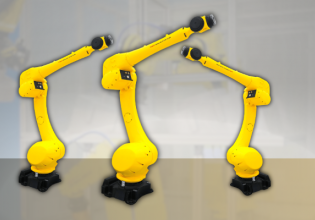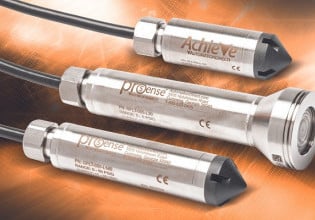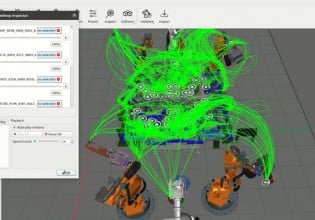Relays, Relays, and More Relays: 7 Kinds of Industrial Relays
Have you ever heard of a relay? Of course you have. There are many different kinds, plus hundreds of different trade lingo names. What are some of the most common, and how do we use them?
The concept of a relay in an electronic circuit is quite simple at its foundation: to allow one circuit to complete another circuit. The importance of this concept is paramount in so many applications that it’s hard to boil them down into one single bullet point list. However, there are a few standouts in the list, and we’ll investigate these relays, and what makes them so important in the world of control engineering.
Electrical Relay / Electronic Relay / Ice Cube Relay
Start with the basic electrical (electromechanical) relay. The basic device has a coil of wire which, when a current is passed through, generates a magnetic field and closes another circuit.
These have long since been used for two main purposes: isolation and amplification. The two circuits are electrically isolated, so if the output contact circuit carries a dangerous voltage and current, the operator or controller attached to the coil circuit remains safe. For amplification, the coil circuit is often low voltage and very low current, so the much larger current can safely pass through the robust relay contacts.
In times past, the relay was the primary local control device, forming vast networks of interlocked logical control systems. The PLC has largely replaced this function in modern times.

Figure 1. A typical mechanical, or 'ice cube' relay. Image used courtesy of the author
Timer Relay / Time-Delay Relay
Due to the advent of PLCs with built-in timing functionality, the use of timer relays has also diminished, but they still appear in some installations where a PLC is overkill.
The timer relay, designated either as an On-Delay or Off-Delay type, allows the input signal to affect the output, but not immediately. Timers are a great solution for either delaying when a load device turns on, or delaying when the load device turns off.

Figure 2. Relay timer compared to modern equivalent PLC software timers. Image used courtesy of the author
Overload Relay / Thermal Relay
The overload used for protecting large motor systems is one relay that is NOT experiencing a decrease in usage from PLC technology. Perhaps the rise of the inverter (VFD) is responsible for decreasing its popularity, but you are bound to encounter many overload relays.
These can also be called thermal relays, but most overloads (you’ll see them listed as OL on a schematic) contain a combination of magnetic and thermal overload components. The magnetic component opens the circuit instantly in case of heavy excess motor current, (excessive motor inrush current). The thermal component takes a bit longer to react and open the circuit, so it’s used to protect against steady-state current rise (excessive sull-load amps, or FLA).
In fact, since the ‘control’ circuit is a high motor current/voltage, while the ‘contact’ output circuit is a small control voltage, these are actually a step-down amplifier relay! These relays will almost always be found attached to the motor starter contactor, which is actually another kind of special relay described later.

Figure 3. An array of electric overload relays. Image used courtesy of Eaton
Solid State Relay (SSR)
This relay offers the same purpose as the typical electromechanical relay, but, as the name implies, it does not operate by means of a magnetic attraction of a circuit element. Transistors allow for very rapid switching with a long life, and models can accommodate either AC or DC loads. The input circuit (sometimes still called a ‘coil’ but it’s actually an LED) uses very low power compared to a wire coil.
These must be used with a bit of caution despite the advantages. Solid-state transistors do dissipate some heat when energized, more than mechanical relay contacts, so they often have a lower load current rating, and they will heat up a lot more. Be sure to use proper thermal mitigation.
Figure 4. Solid-state relays (SSRs) usually require only a couple of volts to energize the input ‘coil’ circuit. Image used courtesy of the author
Safety Relay
This is also a fairly foundational relay concept, as there is no timing or overload capability, but the emphasis is on safety through redundancy. Multiple input coil circuits must all be energized simultaneously, and these, in turn, energize multiple output circuits for motion devices.
Safety relays also usually include more monitoring I/O functions, making them a bit more of a digital ‘computer’ than a simple relay. Yet they are relay devices, nevertheless.

Figure 5. IDEC safety relay modules, with the indicator of K1 and K2 displaying the redundant input coil channels. Image used courtesy of IDEC
Latching Relay / Interlock Relay / Set-Reset Relay
This kind of relay actually has two definitions.
Most commonly, a ‘latching’ relay is not a kind of relay itself, but rather, a wiring strategy. One of the contacts is connected in parallel with the input device, like a ‘start’ button. When the button is pressed, the contact energizes and latches the relay in the ‘on’ position until a ‘stop’ button is pressed.
Alternatively, there are relays that contain two input coils, one to close the circuit and another to open the circuit. There is no spring return to a normal position. The relay is also used for latching start/stop operations, but since a standard 2-pole (or greater) relay performs this job, and is more cost-effective and more widely available, the 2-coil relay is not very common.

Figure 6. A dual-coil latching relay. A close look at the top reveals two small rectangular icons marked with ‘S’ and ‘R’ which indicate the independent set/reset coil sources. Image used courtesy of Grainger
Contactor Relay
Another robust relay that will not disappear anytime soon is the contactor, a main component of the motor starter when connected just before the overload relay (described above).
The contactor has a low-voltage coil, at least, lower than most motor voltages. The coils can be up to 230 VAC, but down to 24 volts like a normal control circuit. Three or four main contacts are all normally open, with one sometimes reserved for a control circuit to verify operation. (PS, do NOT connect the gnd/earth wire to this fourth contact; ground should be a permanent bond).
Contactors can also be outfitted with diodes to prevent flyback, as well as the previously mentioned overloads and additional auxiliary contacts for a highly modular motor-driving thrill ride of a lifetime.

Figure 7. Contactors are usually larger than their relay counterparts. Image used courtesy of Iskara
Which Relay is Best?
Each different kind of relay is built for a specific purpose. If you aren’t sure which to use, consult relevant manuals and subject matter experts in the field of control design. They are a simple, cheap solution for many scenarios, but the wrong choice of relay can result in risk to operators and equipment. A little research and guidance can go a long way.
Featured image used courtesy of Adobe Stock







Hello, i have a reed relay, it says the name is in datasheet
SIP-1A05, is the code, Pang Chang the brand. It is installed in a remote control for crane, and aparently, it is excited bay a magnet, which works as a safety key, instead of using the coil (which exists), to close the contact. Have you heard of such a use for a relay? Or have you heard of that reed relay?